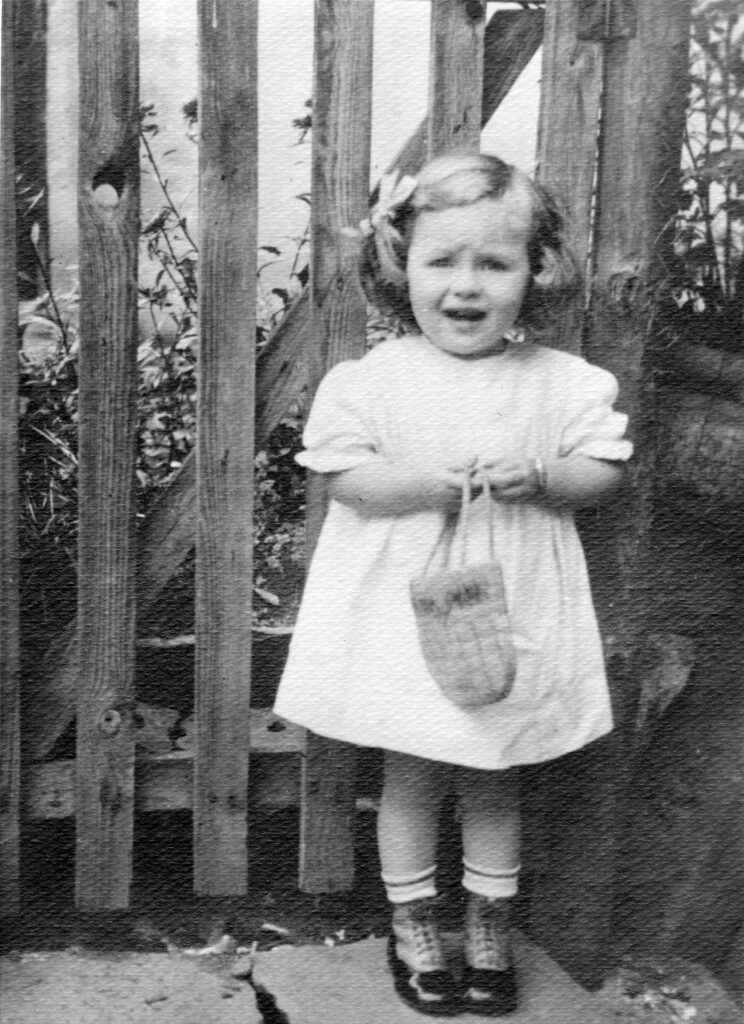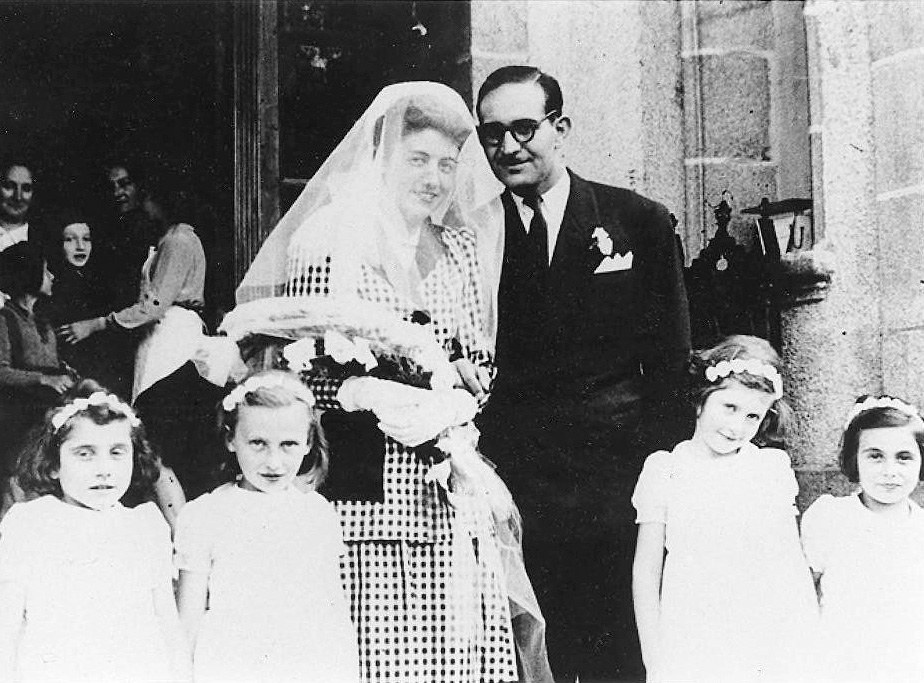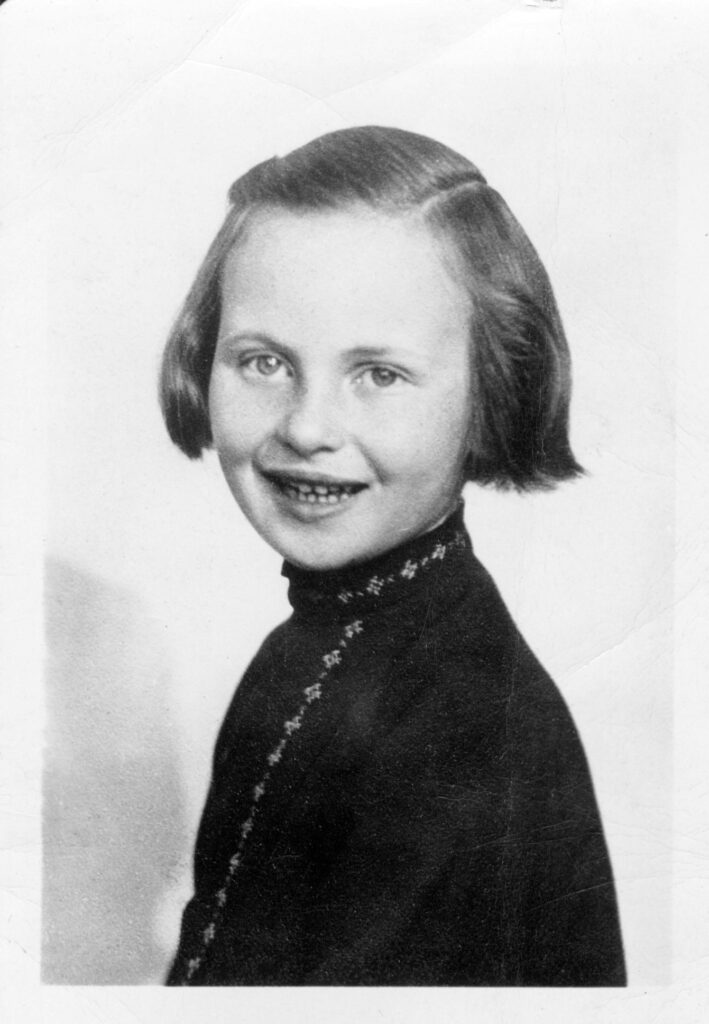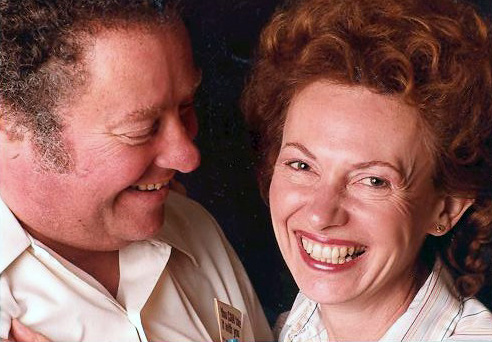By Leo Adam Biga
Author-Journalist-Blogger
Originally appeared in “New Horizons Newspaper” in 1998
On a January morning students at Omaha’s Lewis and Clark Middle School file in an auditorium to hear a tale of survival by Bea Karp, a petite Jewish woman of 66 who as a child in her native Germany, and later in France, endured the Holocaust. She and her younger sister, Susie, are among their extended family’s few survivors. As Bea’s harrowing tale unfolds, the students listen with the stilled respect due the haunted figure standing before them. Not all survivors can speak about their experiences. Some want only to forget, but for Bea, and thousands like her, there is a need to speak out. To bear witness. Why?
“I tell this story in memory of my parents and the six million Jews that died. I don’t want the world to forget. It’s a lesson to the future and the future is in your hands. And it’s up to you to make sure nothing like that will ever happen again,” she tells the students in what is a solemn plea. Her German-accented voice rings strong and clear. Her words intoned as in prayer. Her kind eyes shimmer with sadness, yet burn with defiance. Her resolve remains unshakeable. Her will, unbroken.
One wonders if these comfort-laden kids understand the true horror of what she describes. Then again, who among us really can, save another survivor? But the rest of us do have much to learn from her. If nothing else, that the human spirit can persevere in the most awful circumstances. Because she has so much to offer, Bea often shares her story with school, church and service organization audiences. She does it, she says, so others may know “how terrible hatred and prejudice is and what a terrible sickness it can be when you are not tolerant of other people.”
In 1936 the former Bea Stern had her childhood stolen at the hands of Nazi tyranny. Stripped of the most basic human rights, her family was imprisoned in work camps during the Second World War. While Bea and Susie were rescued by a children’s refugee organization, their parents — along with scores of cousins, uncles and aunts — were killed. The orphaned sisters were fortunate enough to have relatives in England to take them in. By their teens the sisters came to America and remade themselves — marrying, bearing children, leading full lives. While Bea’s post-war years have not been tragedy-free, she’s found meaning in life and dedicated herself to educating others.
Every survivor has a story. Ultimately, it’s one of rebirth. Of going into the abyss and coming back out, scarred, but alive, and, as in Bea’s case, compelled to testify. As the number of survivors dwindles each year, there is added urgency to having their stories recorded for future generations. In 1994 that same urgency drove Steven Spielberg to establish the Survivors of the Shoah Visual History Foundation as a vehicle for preserving survivors’ testimonies. To date, the Los Angeles-based foundation has videotaped interviews with 50,000 survivors, including Bea, worldwide. The goal, says executive director Michael Berenbaum, is developing the most comprehensive multimedia archive of survivor testimonies and making this material available via computer technology for educational used in schools, libraries, museums, et cetera. Further, he adds, the project is giving survivors like Bea a voice and face in history.
Omahan Ben Nachman, who interviewed 60 people for the project, says of survivors: “They’re the most special people in the world. They’re the most morally correct people I’ve ever found. I never see hate in them and they’ve got every reason in the world to hate. They’re my heroes.” The telling, painful as it is, has not gotten easier for Bea. She began talking about her experiences years ago at the urging of her then young children. She’s since shared her odyssey with her seven grandchildren and scores of other young people in schools.“At first I had a very bad time about it. It was very difficult for me,” she says. “After all these years I still get emotional. It pulls me back too much and the emotions I felt then I can still feel. But I think it’s helped me a lot psychologically. I don’t hold it all inside of me. I feel like I’m doing something good and I feel my parents really want me to do it too. If I can just teach one person each time I tell my story, it’s well worthwhile.”
 To appreciate the arc of her story one must go back to the beginning. To when the darkness descended and innocence ended. The year was 1936. Bea was 4 and living with her family in her birthplace, Lauterbach, a scenic rural village in western Germany. A sedate place where children played safely in the unpaved streets. Her family had a good life. Her studious father, Moritz, owned a textile store that her resourceful mother, Rosa, helped in. Their nice spacious home accommodated the immediate family as well as Bea’s grandmother and an uncle.
To appreciate the arc of her story one must go back to the beginning. To when the darkness descended and innocence ended. The year was 1936. Bea was 4 and living with her family in her birthplace, Lauterbach, a scenic rural village in western Germany. A sedate place where children played safely in the unpaved streets. Her family had a good life. Her studious father, Moritz, owned a textile store that her resourceful mother, Rosa, helped in. Their nice spacious home accommodated the immediate family as well as Bea’s grandmother and an uncle.
Bea remembers, “We always had an open house. There was lots of goings-on. My aunts and cousins used to come and visit all the time. We enjoyed music. My mother and father loved dancing. Lauterbach was the only childhood I knew.” Far removed from Berlin, the Sterns were at first unaffected by Hitler’s anti-Semitic policies. But things soon changed. Jews were made to wear the yellow star. Signs emblazoned with “Juden verboten” (Jews forbidden) sprang up. Restrictions on their activities enacted. The black-booted, brown-shirted military began brutalizing the Jewish citizenry. Bea still sees the approaching apocalypse in the form of a rumbling tank. “The first time I was aware that something was wrong came while playing in the streets. Suddenly, a tank came rolling onto that same street, going very slowly but still kicking up dust. I got terribly scared and screamed, ‘Momma, momma, momma.’ That was the start of it all. That was kind of like the end of my childhood.”
She recalls arguments at home between her father and uncle over whether to stay or flee. Her uncle favored leaving, her father did not. “I think my father was a bit scared of leaving Lauterbach because, you know, where were we going to go? What were we going to do? My father had responsibilities. He had a family to feed.” As things worsened, her uncle left, taking his mother and sister with him to Palestine. Her father did act when anti-Jewish decrees effectively made them non-citizens. “Hitler decreed Jews could not own any property,” she notes, “so therefore we had to give up our home and my father had to give up his textile store. There was no means for him to make a living.” She says her parents were in a state of disbelief over the turn of events. Numbed over being branded outcasts in their own country, a county the Sterns had called home for generations. “They were shocked because they thought of themselves as German. That’s when I really felt personally what Hitler was doing,” she says.
In the face of such hostility the family moved to Karlsruhe, a city on the western border of France, near the Black Forest. It proved no friendlier. “Nobody wanted to rent an apartment to a Jewish family,” Bea says. “By then the Gentile community was afraid to have anything to do with Jews. We stayed at the apartment of an aunt and uncle and their three children. It took my father six weeks to find a small apartment of our own.” Her father, unable to ply his trade, worked as a manual laborer.
Their lives grew ever more restricted. With religious services banned, her Orthodox family went to a nearby apartment for clandestine prayers. A lookout on the street below watched for approaching soldiers. School became a nightmare for Bea and her Jewish classmates. “I hated going to school. The other kids would push us on the street. They’d yell at us, ‘Dirty Jew, Christ killer.’ It got so bad my father had to go with me.” She says grownups were at even greater risk, targeted by roving gangs and thugs. A male cousin disappeared without a trace. The parents of her Gentile friends were quite cruel.“I had a friend across the street and we used to play with our dolls together. I loved her very much. One day I knocked on her door and her mother opened it, looked at me and closed the door in my face. That was the end of our friendship. I was heartbroken. I didn’t realize she wasn’t Jewish. When you’re small you don’t think that way. I never thought about being different.”
As Bea and her family were made strangers in their own homeland, the less secure and more frightened they became. “These were very, very difficult times on my parents and us children. We really felt the hand of anti-Semitism. It wasn’t a good feeling.” With conditions deteriorating, she says she grew angry at her persecutors and turned from a shy, sweet-mannered girl into a loud rebel, once even daring to vent her anger at a soldier.“One day my sister and I were playing in the street when two Nazis passed by. I went ahead and picked up pebbles from the gutter and threw them at them. One of the pebbles hit them and they turned and came after us. All of us ran and we escaped them in an alley. My mother, who had watched the whole incident from the living room window, was furious with us.”
Bea recalls family discussions regarding plans for departing Germany.“I think we were very close to being able to leave,” she says, but once the borders closed and refugee quotients enacted, “then it was too late. On November 9, 1938 the Nazis unleashed a nationwide pogrom foreshadowing the atrocities ahead. Mobs swept through the streets smashing windows, looting shops, burning synagogues and ransacking homes of Jewish residents. Bea recalls the glow outside her bedroom window and thinking all of “Karlsruhe” was on fire.” The terror campaign didn’t stop there, either, as Jewish males were attacked and some killed, The glass shards littering the streets came to symbolize not just shattered windows, but shattered ideals, morals, laws and lives. It came to be known as Kristallnacht of The Night of the Broken Crystal. When Bea’s father didn’t arrive home that evening from work, her mother grew distressed.“I still remember her pacing. He never did come home that night. We learned he and other men had been rounded up and taken to Buchenwald, one of the worst concentration camps. I shall never forget the day he came home. He was covered with blood and mud. He was trembling. He was a sick man for a very, very long time and never quite recovered from his ordeal.”
By the fall of 1940 Jewish children were not allowed to attend school, and Bea, then 8, was increasingly running wild, getting into trouble. One day, without warning, there was a pounding on the apartment door. The Gestapo. The armed men barked orders to pack enough for two weeks. Bea remembers her mother asking, ‘Where are you taking us”’ and being roughly rebuked. “You ask too many questions. Mach schnell! Mach schnell!,” (hurry up, hurry up) the men yelled. In the chaos Bea retrieved her favorite doll but a Gestapo goon shook her arm, saying cryptically, “Where you’re going you don’t need this doll.” Bea was scared, then angry, and threw the doll on the floor, its porcelain face breaking. She gripped a table leg, sobbing to her mother, “‘I just know we’re never going to come back here.’ I was very agitated,” she recalls.
“My mother had a horrible time prying my hands loose and getting me out the door.” So traumatizing was the episode that Bea recalls only her mother during this period, even though her sister and father were present.“I was beside myself for a long time. It was like they uprooted me.”The family was taken to the city’s railroad station, where they and many others were forced aboard a passenger train, their destination unknown. “As we moved into the countryside some people jumped through the windows of the moving train,” she says. “But there were soldiers on the roof and they shot at the people. I don’t know how many escaped.” The train stopped at a French-German border station, where a voice on a loudspeaker ordered everyone to get rid of money or else be shot. When she saw her mother trying to hide money, she screamed, ‘No!.’ “My mother said, ‘Here…get rid of it,’ and so I took the money, went to the restroom and threw it down the toilet. Coming back to our compartment I saw, sure enough, the Nazis searching everyone. They took people off, lined them up on the platform and shot them.”
When the train stopped again in southern France, the prisoners were ordered off, loaded onto trucks and transported to the work camp Gurs. Bea remembers it as “a dismal place. All gray, brown and black. Barbed wire strung all around the camp. There were so many barracks that it looked like a small village. Guardhouses towered above the barracks.” Upon arrival the men and women were separated. “And that’s the next time I’m conscious of my dad again,” she says. “Because I had to say goodbye to him, I just clung to him.”
She saw her father only twice more. Once, she and her sister defied orders and bravely marched past guards to the men’s compound, finding their dad frail and weak. While in his barracks she recalls each of the men being given a raw egg, an unheard of delicacy. The famished Bea could “already taste” it. When cracked open, however, the eggs were all bloody inside. “My father got very agitated because as an Orthodox Jew he could not eat such an egg. It’s not Kosher. The Nazis were playing psychologically games. But I thought, ‘My father will surely make an exception. We’re starving, after all.’ Well, to my utter surprise he threw the egg against the wall, and I went to the wall to lick off the yellow ooze, but when I saw the expression on my father’s face I couldn’t do it. I was so furious I stomped my feet on the floor. He took me and my sister in his arms and then we all cried. Looking back on it, I now admire my father’s fortitude.”
She saw her mother endure her own indignities, as when her pierced gold earrings were “pulled right off her ear lobes. To this day I can hear her cry out from the pain.” Bea, Susie and their mother were assigned a barracks with dozens of others. The trio shared a rickety bed with a straw-filled mattress. Lice and rodents abounded. There was no medicine to treat sores, which invariably became infected. It rained often, leaving the compound a muddy quagmire. Their diet consisted almost entirely of watery soup. The entire barracks’ daily bread ration was but one loaf and its division caused bitter fights. “if one person would get just a little bit more than somebody else,” Bea says, “the other women would jump on her. These women, who used to be ladies, ruined into animals. It was horrible.”
To survive, Bea became like a feral child — scrounging and scavenging garbage cans for food. Any respite from the misery and tedium was welcome, as when a visiting Red Cross worker sang for the children and treated them to Swiss cheese wedges. But in such conditions even acts of kindness were soon perverted. “The stronger of us would take cheese from the weaker,” Bea says. “One day I even took a piece from my sister…a terrible thing to do.”
While adults worked as slave laborers, children went on long forced walks. Stopping invited beatings. Still, life went on. Children played games. Inmates performed music. Secret classes met. A black-market thrived. The family was at Gurs several months when Susie, who developed an infection from scratching her lice-infested head, was among a group of children taken out of the camp by the O.S.E. (The Osay), an international humanitarian organization operating homes in France for refugee children. Saying goodbye, not knowing if they’d ever see each other again, was hard on everyone. Some time later, in about late 1941, the cholera-stricken Bea was herself rescued by the O.S.E. from the work camp Rivesaltes, where Bea and her parents had been taken. Each time, Bea’s mother was given the impossible choice of letting a daughter go or stay to meet an uncertain fate. Some mothers refused to give their children up.
“It must have been terrible for my mother,” she says. “First, one daughter, and then her other daughter leaving her. I don’t know how she did it. I don’t know how much she knew. Maybe only that we’d be better off anywhere than in the camp. At the time though I didn’t want to leave.” But leave she did, staying in a series of safe houses where refugee children like her were fed, supervised and educated. Over the next couple of years she moved 14 times, eventually reuniting with Susie. Once rejoined, the sisters were inseparable. The homes, scattered throughout southern and central France, were large chateau estates. The children attended classes and performed chores. They received mail from family, although Bea and Susie heard nothing more from their parents after early 1942.
Bea describes it as “an uncertain time,” adding, “I never knew how long I would be staying in one place. I never made close friendships.” By 1943 The Final Solution was in full gear and the homes , which the Vichy regime tolerated at its discretion, were no longer safe havens. The children were dispersed — some to Christian families and others, like Bea and Susie, to a convent in Millau. The girls were given French names and identity cards, staying there nearly till the war’s end.
By then Bea’s parents were presumed dead, yet there was nothing concrete. “There were rumors” about death camps,” she says. “I knew something terrible had happened. That they were gone, but where or how, I didn’t know. For the longest time I still had hope that maybe, maybe they escaped. I remember thinking, What am I going to do? My sister and I are left all alone in the world.”
She knew the war in Europe was won when American and Russian planes filled the skies in 1945. That’s when the O.S.E. reentered her life and placed her and Susie back in a chateau. An ad in an international Jewish newspaper requesting contact with any living relatives netted responses from Israel and England. That same year the girls, then 13 and 10, left for London to live with an uncle and his family. There, Bea and Susie began a new life and with it learned new customs and a new language. As teens they made yet another transition, coming to America to live with an aunt and her family in New York, Queens to be exact.
Soon after graduating high school Bea married American-born Bob Pappenheimer and in 1949 moved with him to O’Neill, Neb., where he worked in the grocery trade. They raised four daughters there. It was in O’Neill when she got official word her parents had died at Auschwitz. 
“I was very much upset because it was so final. On the the other hand, part of me was also relieved to finally know.”
In the 1960s the family moved to Omaha, Her husband, Bob, died of cancer in 1987. Her second husband, Harold Karp, died also of cancer. Even after losing so much and then being twice-widowed, her indomitable spirit carries on, her righteous path continues. How?
“It’s like I told my sister when we left England: “Susie, we’re just turning another corner.’ That’s my attitude. Take things in stride. Otherwise, you give up.” Her resiliency springs from a near epiphany at one of the children’s homes.
“I was going down the staircase to the dining room, holding onto the railing, wondering, Why am I feeling happy? — things are just terrible. And it suddenly dawned on me happiness is something that comes from within. It was like a revelation. I learned to just take care of the moment. To not worry too far ahead. That it isn’t so much what life hands you, as how you cope with what you get. And I always remembered that through everything.”
It is a survivor’s philosophy. One from which we might all benefit.